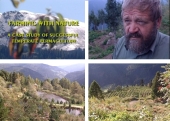









"the qualities of these bacteria, like the heat of the sun, electricity, or the qualities of metals, are part of the storehouse of knowledge of all men. They are manifestations of the laws of nature, free to all men and reserved exclusively to none." SCOTUS, Funk Bros. Seed Co. v. Kale Inoculant Co.












CBostic wrote:If anybody can give me any other ideas what I can do to add soil life or encourage what little I've got, I'd be very appreciative.
"the qualities of these bacteria, like the heat of the sun, electricity, or the qualities of metals, are part of the storehouse of knowledge of all men. They are manifestations of the laws of nature, free to all men and reserved exclusively to none." SCOTUS, Funk Bros. Seed Co. v. Kale Inoculant Co.
















CBostic wrote:in just about 6 weeks at the most my soil has gone from awful to good - at least as far as tilth goes.
CBostic wrote:I should probably try to get as many different sources of compost as possible. I've been using cow manure and bark mulch because they're easy to find and I'm familiar with them and they're probably local. But I think I need to expand my horizons. I know I can get poultry manure and mushroom compost at the local big box stores.
"the qualities of these bacteria, like the heat of the sun, electricity, or the qualities of metals, are part of the storehouse of knowledge of all men. They are manifestations of the laws of nature, free to all men and reserved exclusively to none." SCOTUS, Funk Bros. Seed Co. v. Kale Inoculant Co.




 I'll have to do some more controlled tests if I really want to know what got things going.
I'll have to do some more controlled tests if I really want to know what got things going.Over the lifetime of these sunflowers, you might look into a guild that will support the figs long-term.
Used coffee grounds from a local shop might be worth looking into,





Paul Cereghino- Ecosystem Guild
Maritime Temperate Coniferous Rainforest - Mild Wet Winter, Dry Summer




Paul Cereghino wrote:there are a bunch of sub-tropical nitrogen fixing shrubby things that might suit your situation
"the qualities of these bacteria, like the heat of the sun, electricity, or the qualities of metals, are part of the storehouse of knowledge of all men. They are manifestations of the laws of nature, free to all men and reserved exclusively to none." SCOTUS, Funk Bros. Seed Co. v. Kale Inoculant Co.
















Seed the Mind, Harvest Ideas.
http://farmwhisperer.com

















- Tim's Homestead Journal - Purchase a copy of Building a Better World in Your Backyard - Purchase 6 Decks of Permaculture Cards -
- Purchase 12x Decks of Permaculture Cards - Purchase a copy of the SKIP Book - Purchase 12x copies of Building a Better World in your Backyard

|
I'm a lumberjack and I'm okay, I sleep all night and work all day. Tiny lumberjack ad:
World Domination Gardening 3-DVD set. Gardening with an excavator. richsoil.com/wdg |






